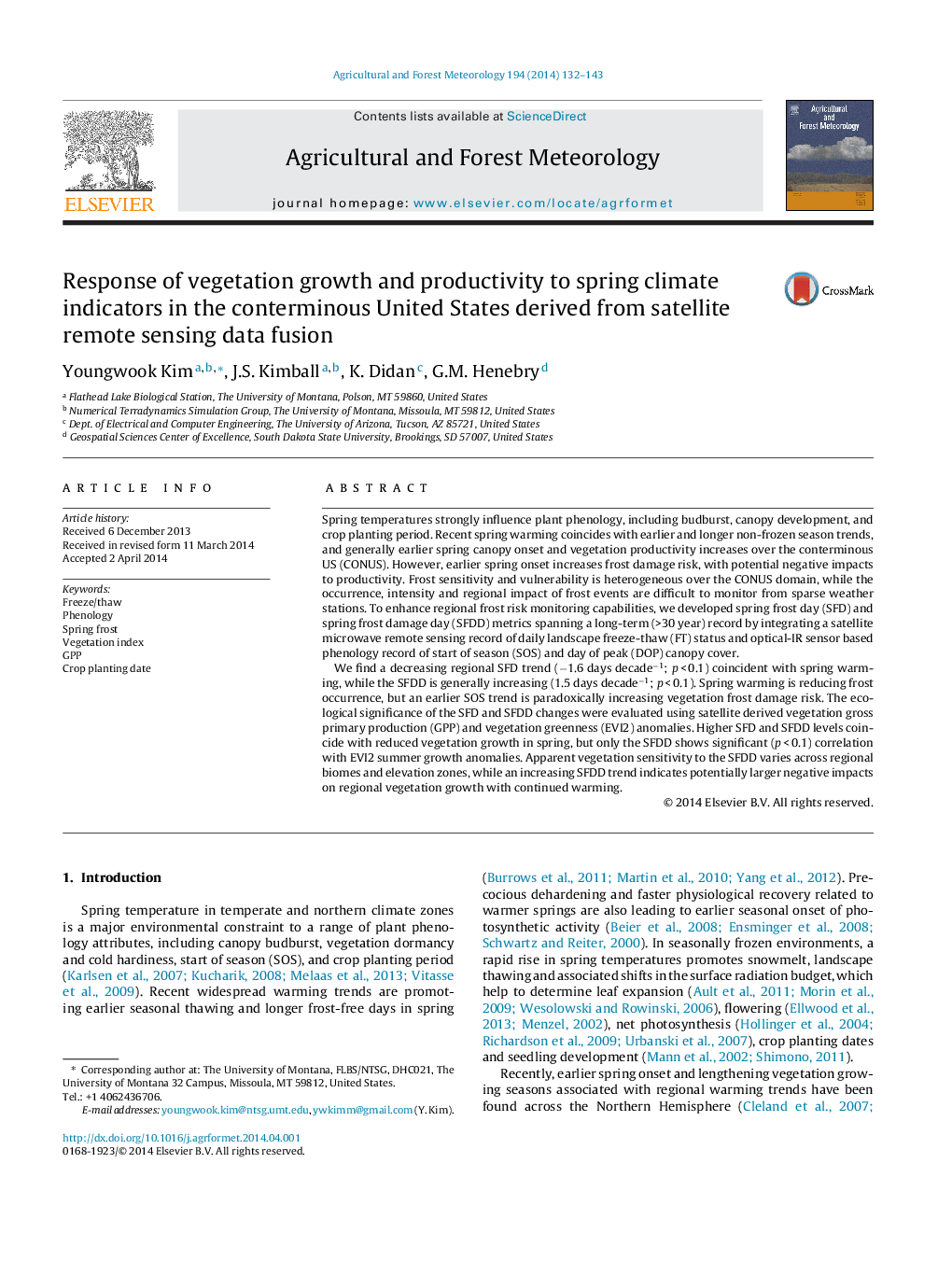| Article ID | Journal | Published Year | Pages | File Type |
|---|---|---|---|---|
| 6537576 | Agricultural and Forest Meteorology | 2014 | 12 Pages |
Abstract
We find a decreasing regional SFD trend (â1.6 days decadeâ1; p < 0.1) coincident with spring warming, while the SFDD is generally increasing (1.5 days decadeâ1; p < 0.1). Spring warming is reducing frost occurrence, but an earlier SOS trend is paradoxically increasing vegetation frost damage risk. The ecological significance of the SFD and SFDD changes were evaluated using satellite derived vegetation gross primary production (GPP) and vegetation greenness (EVI2) anomalies. Higher SFD and SFDD levels coincide with reduced vegetation growth in spring, but only the SFDD shows significant (p < 0.1) correlation with EVI2 summer growth anomalies. Apparent vegetation sensitivity to the SFDD varies across regional biomes and elevation zones, while an increasing SFDD trend indicates potentially larger negative impacts on regional vegetation growth with continued warming.
Related Topics
Physical Sciences and Engineering
Earth and Planetary Sciences
Atmospheric Science
Authors
Youngwook Kim, J.S. Kimball, K. Didan, G.M. Henebry,
